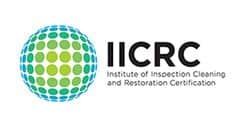
Keeping your range hood clean is essential for kitchen safety and hygiene. Over time, grease, oil, and other cooking residues can build up on the range hood and pose a fire hazard. Regular cleaning helps remove this grease buildup and allows your range hood to work effectively at ventilating your kitchen.
In this comprehensive guide, we will cover everything you need to know about cleaning your range hood and eliminating grease.
Here are some key reasons why regular cleaning of your range hood is crucial:
The frequency of cleaning depends on how often you use the range hood.
Do a visual inspection in between complete cleanings. If you notice excessive grease buildup, clean the hood immediately.
Gather these supplies before you start cleaning:
Follow these steps to thoroughly clean your range hood:
Removing range hood filters
Soak filters in hot water mixed with dish soap. Use a soft brush to gently scrub away grease deposits.
Rinse thoroughly and allow it to dry before reinstalling. Replace filters that are too greasy or damaged.
Cover nearby appliances and surfaces with plastic sheets to protect them from cleaning spray and grease drips.
Use a small brush or toothbrush to brush away any loose dirt or debris inside the range hood body. Clean fan blades, corners, and interior surfaces.
Spray interior surfaces with a degreasing agent like dish soap, baking soda solution, vinegar solution, or commercial degreasing spray. Avoid harsh, acidic cleaners.
Let the degreaser sit for 5–10 minutes.
Use a soft brush or microfiber cloth to scrub the degreaser and dissolve sticky grease deposits. Pay extra attention to hidden corners and crevices where grease accumulates.
Wipe all surfaces clean with a microfiber cloth and hot water to remove grease and degreaser residue.
For ventless range hoods with a charcoal filter, carefully wipe to avoid getting the filter wet.
Spray the exterior surfaces with degreaser and let them sit briefly. Use a microfiber cloth to wipe away grease. Pay special attention to the crevices and the underside of the hood.
Once fully dry, carefully reinstall clean filters by sliding them back into place.
And you're done! Following these steps to regularly clean your range hood will help maintain safety and keep your kitchen degrease-free.
If you don't have commercial cleaner on hand, you can make DIY degreasing solutions using items you likely have at home:
Baking Soda Solution
Mix 1 part baking soda with 3 parts warm water. Spray and let sit for 10 minutes before scrubbing and rinsing. Baking soda dissolves grease.
Vinegar Solution
Mix equal parts warm water and white vinegar. Spray the range hood and let it sit briefly before scrubbing away grime. Vinegar cuts through grease.
Dish Soap
Hot water mixed with grease-fighting dish soap like Dawn also works to dissolve sticky grease on range hoods.
If DIY efforts don't remove stubborn grease stains or the range hood cleaning process seems overly difficult or hazardous, contact appliance repair experts for professional cleaning.
Many companies offer exhaust system cleaning using powerful hot water sprayers to scrub away extreme buildup. Professionals have commercial degreasers and tools to thoroughly clean excessively dirty vents and ducts.
Here are some tips to keep your freshly cleaned range hood grease-free for longer:
Allowing grease buildup in your range hood is a safety hazard and reduces kitchen air quality. Follow this comprehensive cleaning guide to eliminate grime and keep your range hood working efficiently.
Regularly removing grease also improves ventilation, equipment longevity, and compliance with codes. Implement these cleaning tips and maintenance practices to keep your range hood sparkling clean for years to come.

Harry Virk is the director of CleaningPro Auckland. He has years of experience in the cleaning industry and his company is expert at providing exceptional cleaning services in Auckland. He has a passion for helping people and making sure that their homes are clean, tidy, and ready for visitors.




